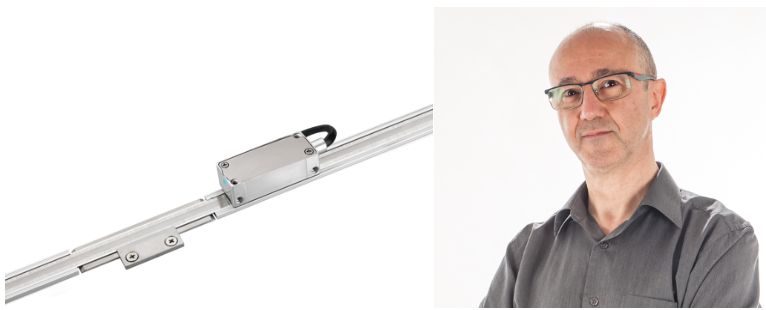Tomás Morlanes is an optical technology manager at Fagor Automation in Spain. His job is to ensure that the automated systems developed, like linear encoders, measure movements correctly. Within the EU-funded project Laser4Surf he aims to improve the precision of linear encoders with the help of ultra-short pulse laser technology.
What is a linear encoder?
Morlanes: Linear and angular position encoders might not be that well-known. They are devices that measure movements of machines along a line or angle. The more precise that measure is, the more precise the manufactured part will also be. Encoders determine the ultimate precision of any machine. Currently, we are developing encoders with a resolution of one nanometre, even though they measure with a precision of roughly one micron per metre.
How does such a linear optical encoder work?
Morlanes: The moving readhead of an optical linear encoder always works together with a stationary scale which it moves along. It sends out an LED beam onto the scale where periodic marks reflect the light back to a sensor in the encoder. Before hitting the scale, the light is diffracted by a grating into periodic strips, just like the marks, thus defining the exact position and direction of the encoder’s displacement.
What industrial applications, in your case, does the Laser4Surf project have?
Morlanes: We are the end users of the Laser4Surf technology. Our hope is that encoder efficiency will be improved by using ultra-short pulse lasers to engrave the gratings on the scale.
Such pulse lasers allow new kinds of diffraction grating, for both phase and amplitude modulation. Moreover, we have a new field emerging thanks to this technology, polarisation gratings. This engraving method will make encoders more robust against dirt and avoids using any chemical products, which is better for the environment.
Who could be interested in these encoders?
Tomás Morlanes: The whole industry. For instance, a machine tool, a milling machine, a grinding machine, a lathe… All of these machines contain encoders, both linear and angular, to determine their positions. Moving to other fields, electronic manufacturing or pick-and-place machines that put the different components on the plates to make welds also have linear encoders. The same with metrology machinery. Cars also contain encoders, although their precision is lower compared to those used in other industrial sectors. ABS systems use them to measure the wheel’s behaviour, informing the on-board computer about how to apply the brakes. Encoders are actually more widespread than people imagine.
How can this technology change the world?
Morlanes: We are making the future right now. It is difficult to know how it will change the world, but we hope that these techniques will play a role in our future.

